7 Porch Decorating Mistakes and How to Avoid Them: Essential Tips for a Welcoming Space
We’ve all seen them: porches that look like they’ve been cobbled together without a plan or porches that feel unwelcoming despite their potential. As seasoned handymen who’ve turned many a drab porch into a welcoming outdoor haven, we’re here to share the common decorating mistakes homeowners make and how to sidestep these pitfalls.
Many folks underestimate the importance of scale and proportion on their porches. That is, choosing furnishings or decorative elements that don’t fit the porch’s size or the home’s architectural style can lead to a disjointed appearance. Think about the balance between your porch’s dimensions and the items you place on it — oversized furniture can overwhelm a small space, while tiny pieces can look lost on a large veranda.
Porch Functionality and Purpose
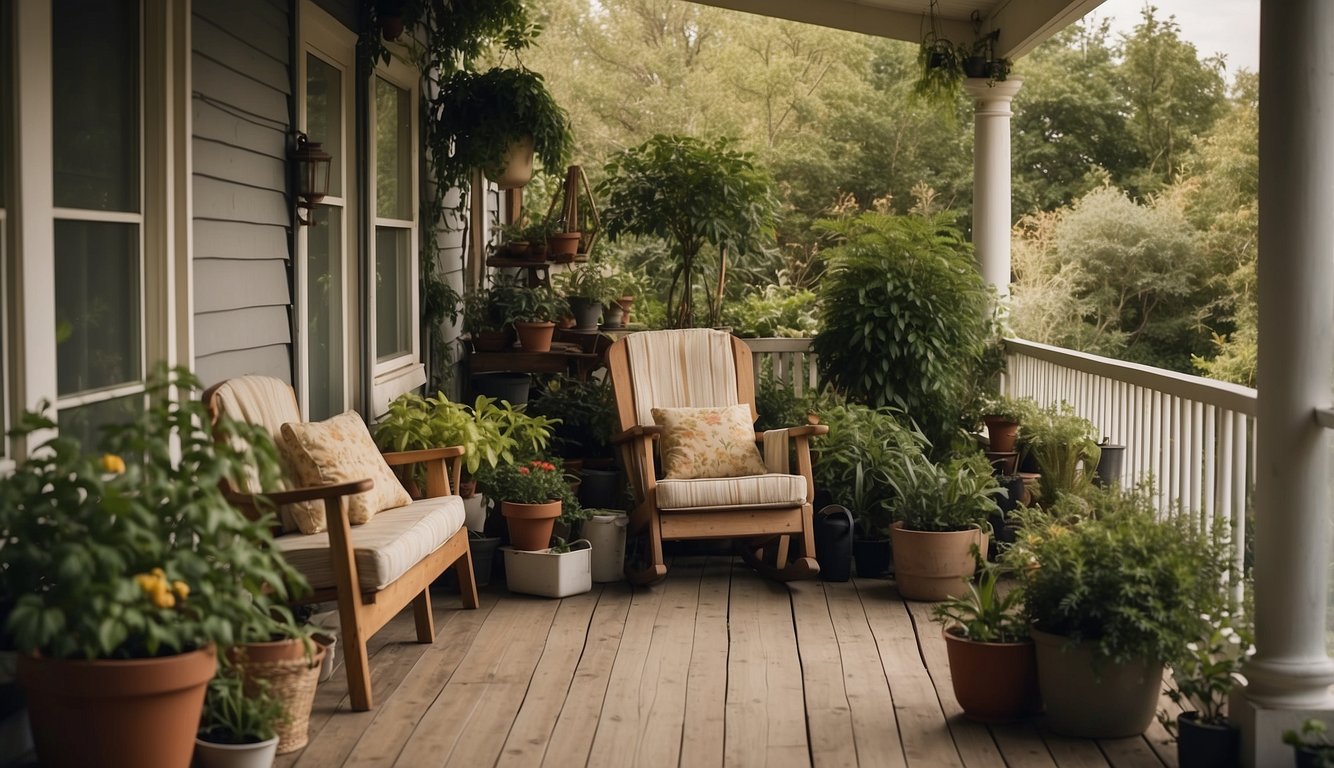
A front porch serves as both a transitional outdoor living space and a key component of your home’s curb appeal. It’s where functionality meets aesthetics.
Maximizing Outdoor Living Space
To turn your front porch into a valuable outdoor living space, consider its practical uses. It’s not just a decorative facade; it should cater to relaxation, entertainment, and even dining. Here’s how:
- Furniture Placement: Choose furniture that fits well, leaving enough space for movement. A common mistake is overcrowding the porch with furnishings that impede flow.
- Zone Creation: Use rugs to define specific areas—such as a seating zone or a small reading nook—to make the space feel intentional and organized.
Focusing on Curb Appeal
The front porch is a visual statement about your home and is the first thing people see. To enhance curb appeal:
- Consistency and Style: Ensure your porch’s design aligns with your home’s overall architecture. Inconsistent designs can lead to a disjointed appearance.
- Maintenance and Details: Regular maintenance of porch elements like railings and posts is key. Additionally, incorporate plants and lighting to add warmth and welcome guests.
Choosing the Right Decor Elements for a Small Porch
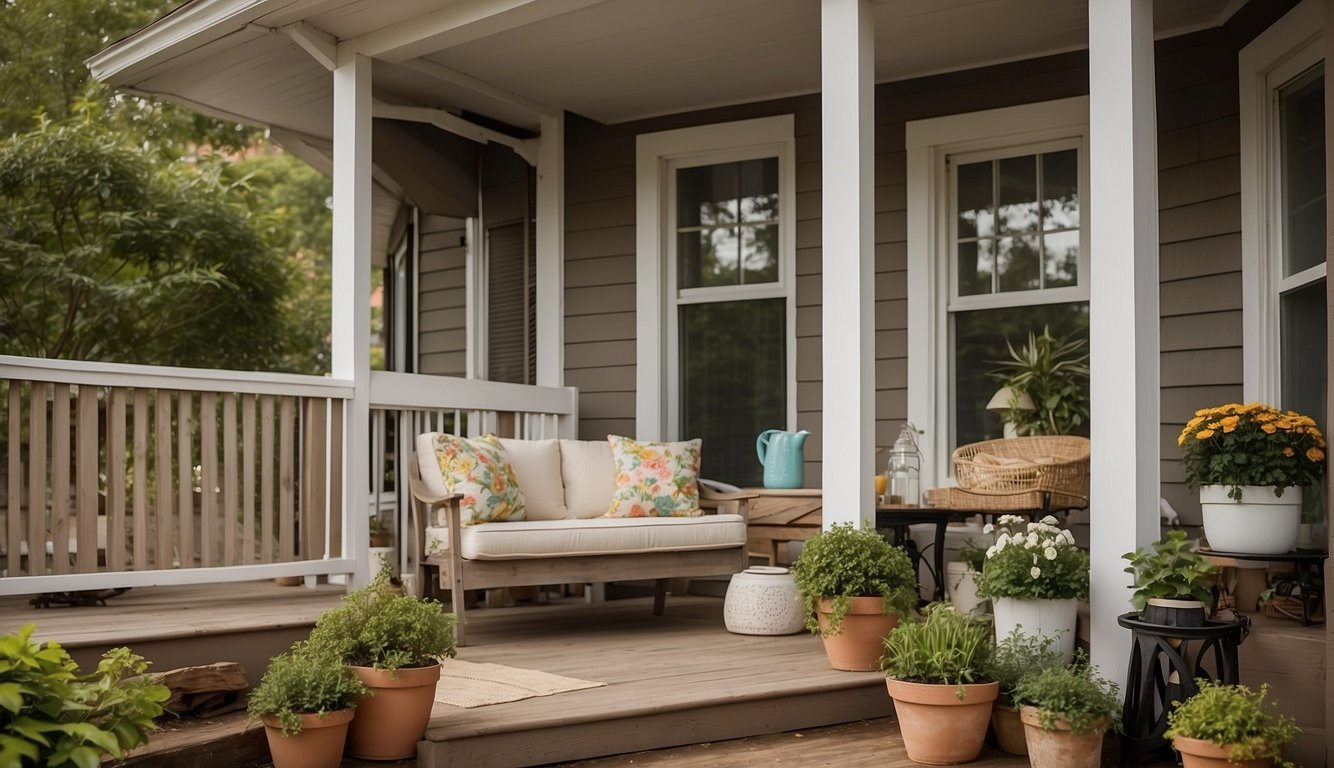
When decorating a porch, the choice of decor elements is crucial. We want to ensure that each piece fits well, complements the surroundings, and establishes the desired ambiance.
Selecting Furniture That Fits
Measurements are key: when choosing furniture, always start by assessing the size and shape of your porch. Aim for a comfortable flow of traffic—furniture should never obstruct pathways. Opt for a loveseat or a couple of chairs with a coffee table, ensuring they speak to the porch’s scale.
- Suitable for Space:
- Small porch: A pair of rocking chairs and a small table.
- Large porch: Loveseat, chairs, and a long coffee table.
Optimizing with Plants and Greenery
Adding plants elevates the look and feel of your porch. We recommend a color palette that complements the house and furniture. A container garden or potted plants can create a welcoming environment while helping to define the porch’s aesthetic.
- Greenery Adds Life:
- Hang planters for vertical interest.
- Utilize varying heights with a mix of tall plants and smaller potted greenery for a layered look.
Lighting: Setting the Tone
Lighting should enhance the porch’s ambiance without overwhelming it. String fairy lights for a subtle, enchanting glow, or install wall sconces that match the style of your home. The key is to blend functionality with aesthetic appeal.
- Lighting Choices:
- For ambiance: Soft fairy lights or lanterns.
- For utility: Wall sconces or overhead ceiling fixtures.
Choose decor elements that fit, harmonize with natural elements, and set the right mood through lighting to create a porch that’s both inviting and stylish.
Arrangement and Style Considerations for a Small Porch
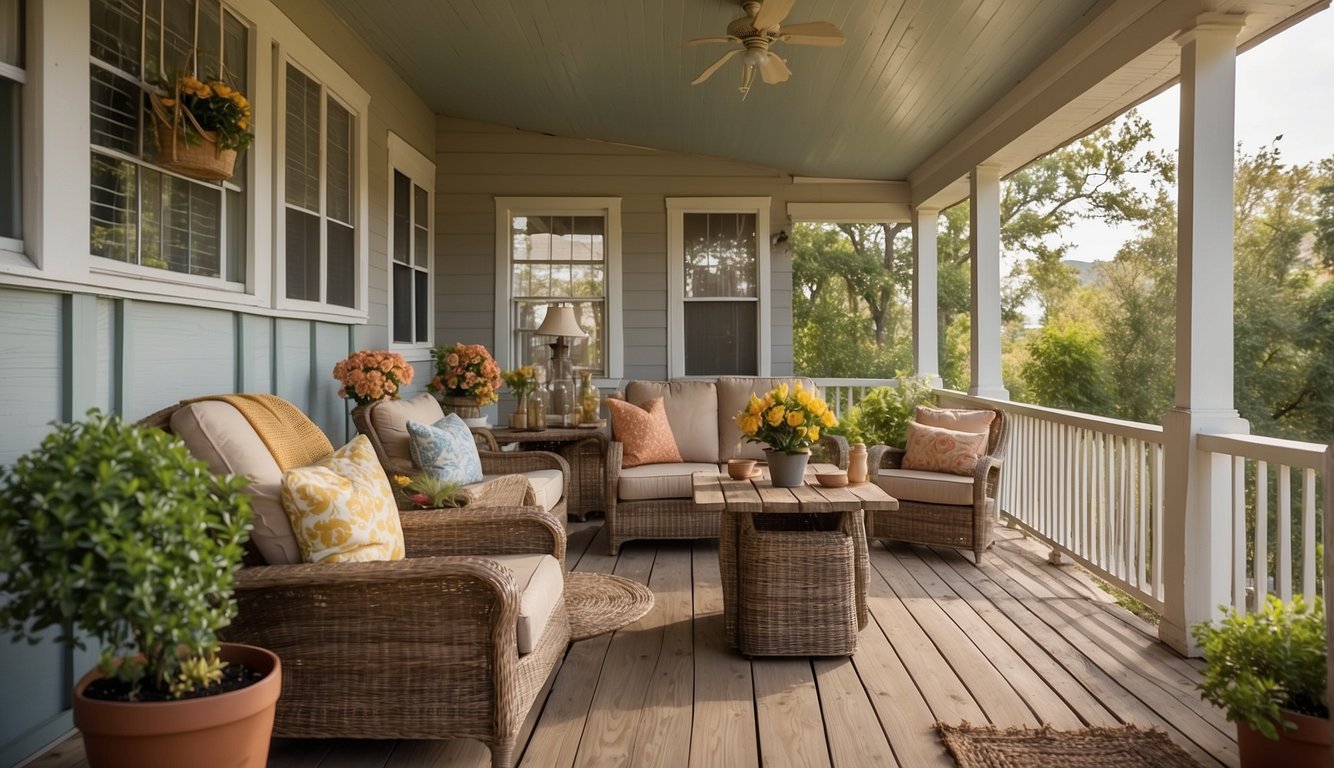
When decorating a porch, it’s essential to establish both a coherent design style and a clear focal point. These two elements work in tandem to create a welcoming and visually pleasing outdoor space.
Creating a Cohesive Design Style
To achieve a cohesive design style, we must first choose a theme that complements our home’s architecture. Whether it be a modern, rustic, or classic Southern look, the design style should reflect our personal taste while also enhancing the existing features of the home. Here’s a concise guide to help us on track:
- Assess the Home’s Architecture: Look at the lines, materials, and era of the house.
- Personal Taste: Select colors, textures, and patterns that we love.
- Professional Advice: Consider consulting an interior designer for a customized plan.
- Decorating Plan: Draft a visual mood board including furniture, textiles, and accessories.
Determining the Focal Point
Identifying a focal point on a porch can dictate the arrangement of furniture and decorations, guiding the eye and providing organized visual interest. Whether it’s a statement piece of furniture, a striking piece of wall art, or a beautiful view, the focal point should be the first thing that catches the eye when entering the space. An action plan for establishing the focal point includes:
- Identify Best Feature: Is there a charming view or an architectural feature of the porch?
- Placement: Arrange seating or décor to highlight the chosen feature.
- Balance: Ensure other decorative elements support rather than compete with the focal point.
By considering both the overarching design style and the focal point, we create a porch that’s not only aesthetically pleasing but also a cohesive extension of our home.
Practical Accessibility and Storage Solutions for a Small Porch
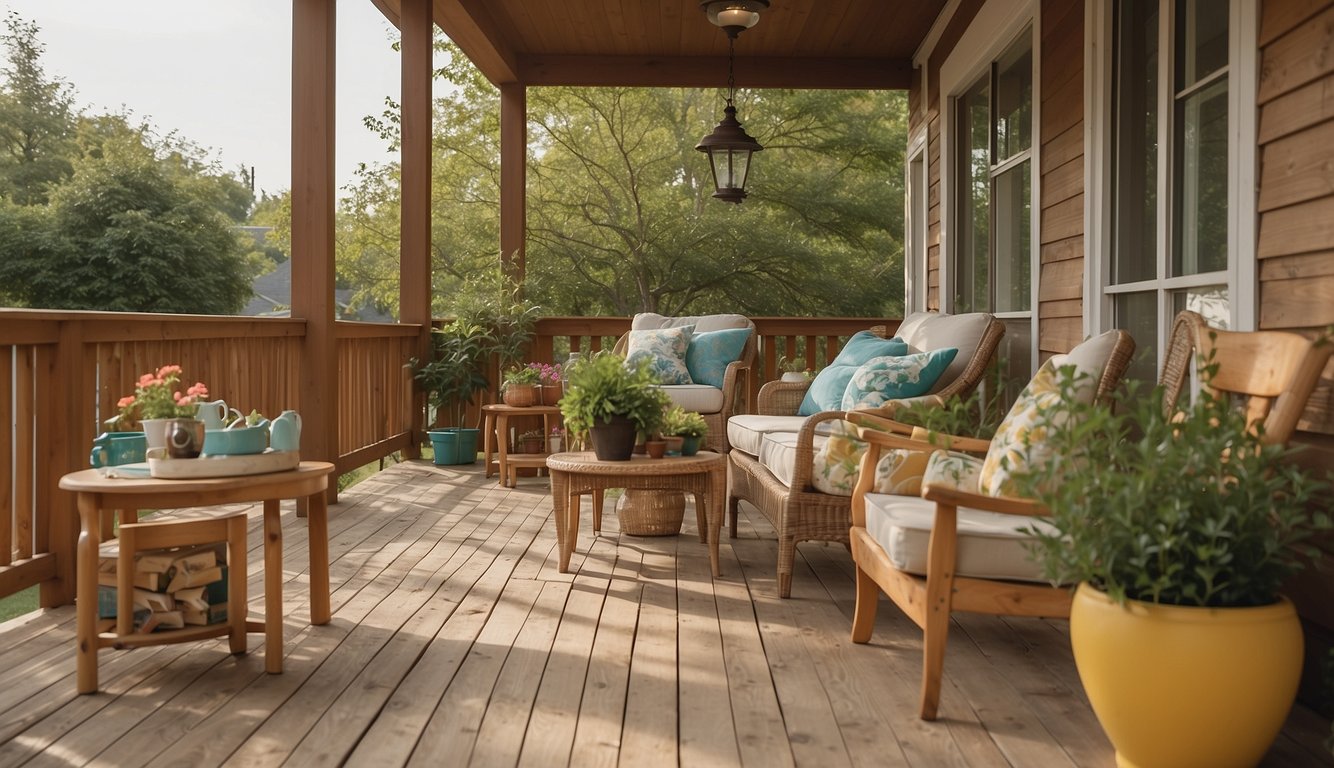
When decorating your porch, the right balance of storage and accessibility can transform a cluttered space into a serene retreat. We’ll explore practical and stylish ways to integrate hidden storage that maintains the aesthetics of your outdoor space while choosing materials that thrive in various weather conditions.
Implementing Hidden Storage Options
Hidden storage is a game-changer for outdoor areas, allowing us to keep essentials close without sacrificing style. Here are some specific ways to incorporate hidden storage:
- Bench Seats with Storage: A dual-function furniture piece where seat cushions lift to reveal storage space.
- Ottomans with Storage: These versatile pieces serve as extra seating, footrests, and hidden compartments for cushions or toys.
- Built-in Planters: Raised planters can have a hidden section below for gardening tools or supplies.
The key is to select furnishings that seamlessly blend with your porch’s design, making the availability of storage a pleasant surprise rather than an obvious addition.
Choosing Weather-Resistant Materials
Selecting weather-proof materials ensures that your outdoor furnishings and storage solutions withstand the elements. Here’s what to look for:
- Synthetic Resin: It repels water, resists sun damage, and is easy to clean.
- Teak Wood: While pricier, it’s incredibly durable and naturally weather-resistant.
- Powder-Coated Metals: These materials protect against rust and provide longevity.
Remember never to compromise on quality for outdoor items—it’s an investment that saves us from frequent replacements.
Avoiding Common Decorating Pitfalls With Small Porches
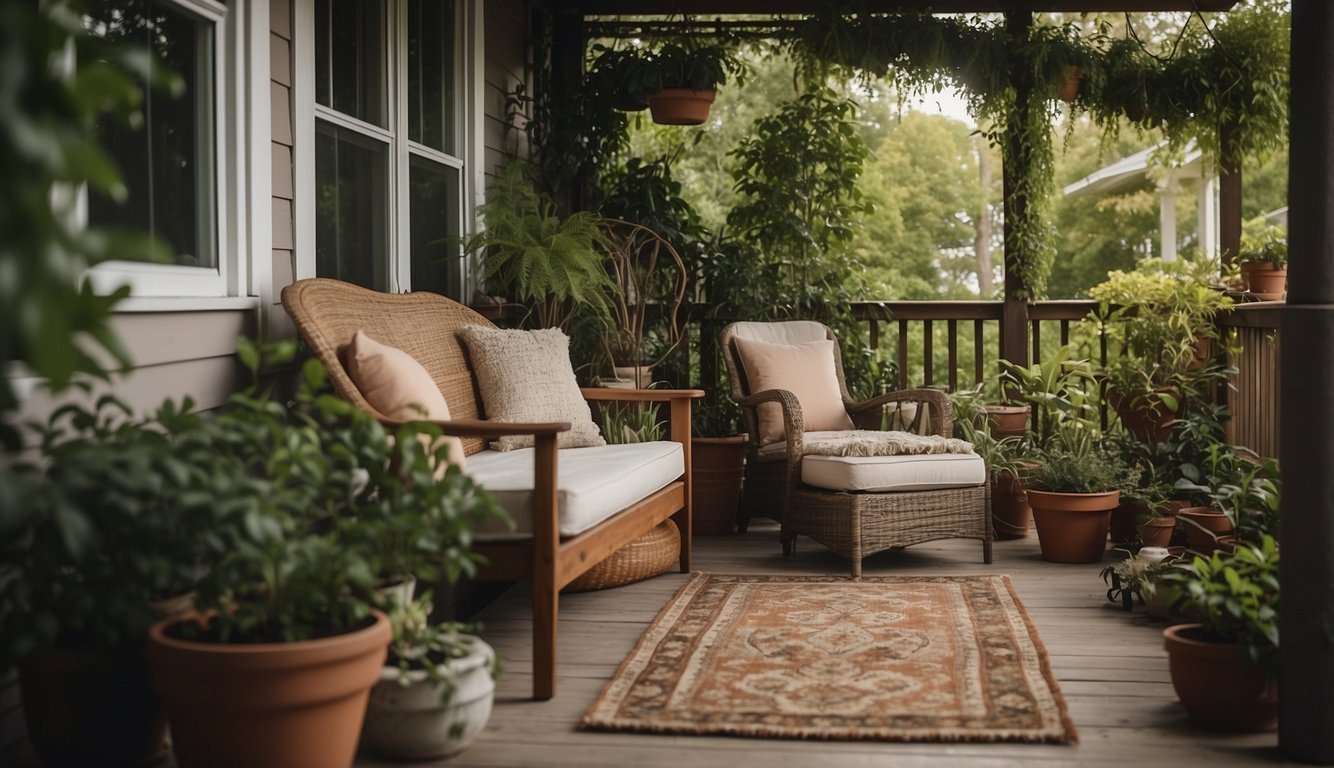
When it comes to porch decoration, we can achieve a balance between form and function by addressing common downfalls. Whether it’s clutter or over-decoration, let’s guide you through keeping your porch welcoming and stylish.
Navigating through Clutter and Maintenance
Clutter: To keep your porch inviting, regularly remove unwanted items and avoid overcrowding with decorative pieces. Here are specific steps to maintain a clutter-free zone:
- Assess: Look at your porch space and identify any items that don’t serve a purpose or contribute positively to the ambiance.
- Organize: Invest in storage solutions like deck boxes or wall hooks to keep necessary items handy yet out of sight.
Maintenance: Keeping a well-maintained porch extends beyond decluttering. Touch-ups and repairs ensure your space remains safe and aesthetically pleasing.
- Regular Checks: Inspect your porch for any signs of wear, such as loose railings or rotting wood, and address these issues promptly.
- Seasonal Care: Apply weather-resistant treatments to furniture and flooring to protect against the elements, ensuring a longer lifespan for your porch decor.
Overcoming Over-Decoration
Maintaining Style Without Excess: A porch should be a seamless extension of your home’s style, not a showcase of every decor item you love. Here’s how to avoid over-decorating:
- Theme Consistency: Stick to a cohesive color scheme and style to create a unified look without overwhelming the space.
- Functionality Focus: Make sure every item on your porch has a purpose, whether for seating or for enhancing the overall comfort and usability of the space.
By adhering to these principles, we can avoid common design mistakes and create a porch that’s as functional as it is welcoming.
Let Us Know How We’re Doing!
Did this expertly prepared resource answer your question?
Do you have another question about home maintenance, home improvement projects, home appliance repair, or something else?
Get more information, send in questions and keep the discussion going by contacting the I’ll Just Fix It Myself company customer service team at at 1-800-928-1490 or Email us at [email protected]
